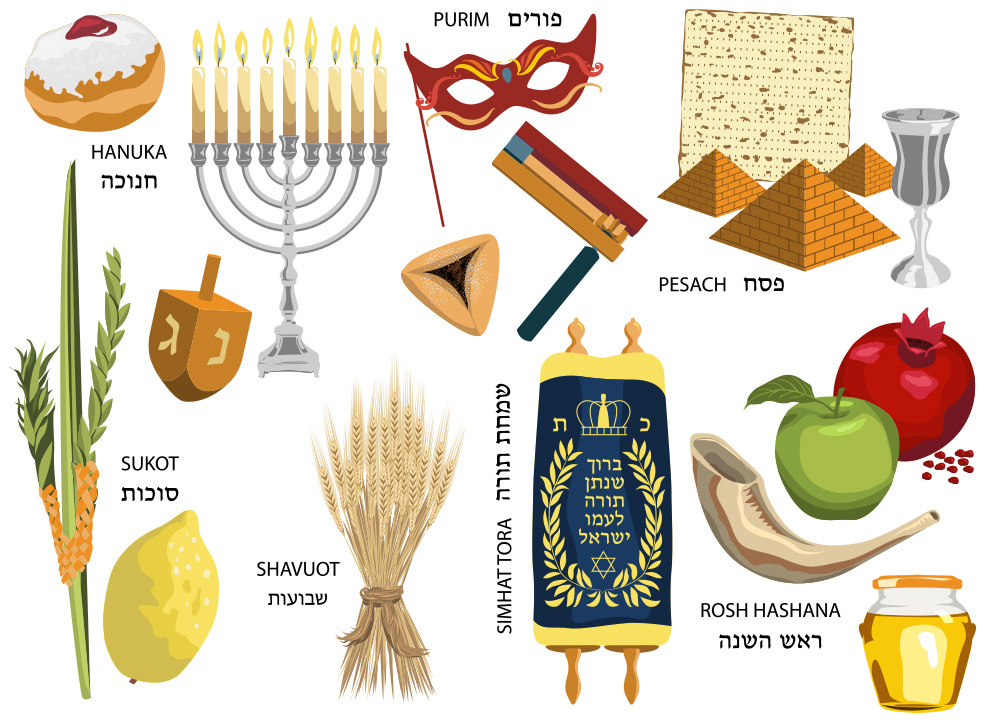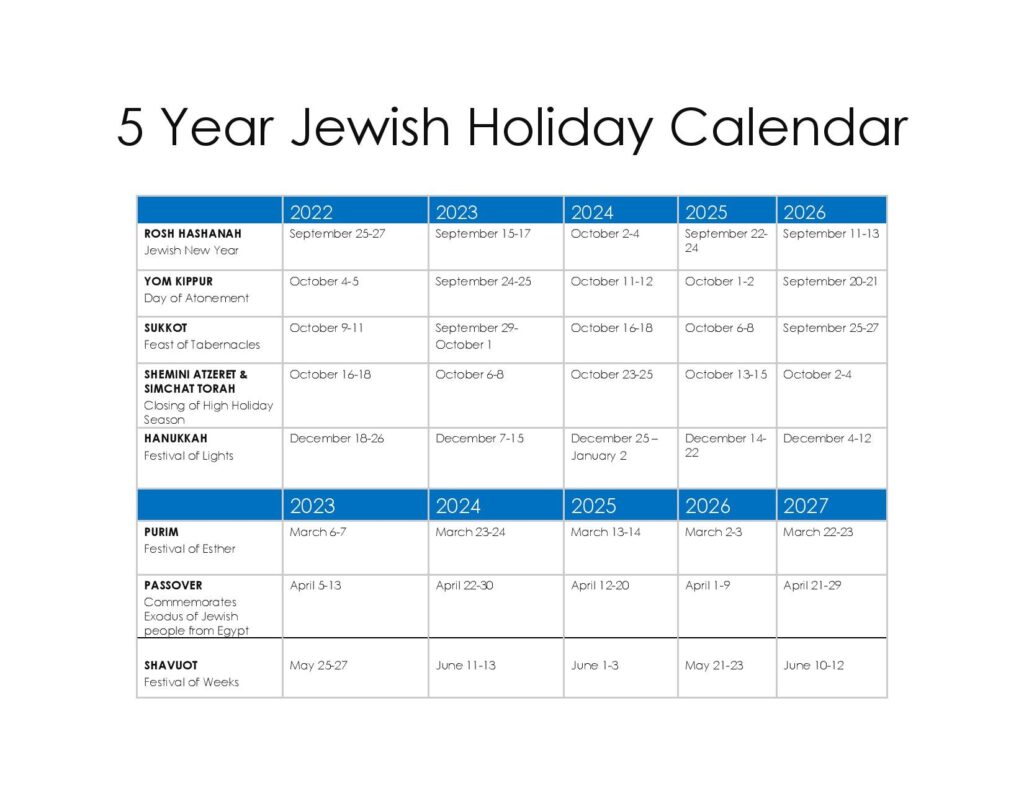Jewish Holidays in September 2025: A Comprehensive Guide
Related Articles: Jewish Holidays in September 2025: A Comprehensive Guide
Introduction
With great pleasure, we will explore the intriguing topic related to Jewish Holidays in September 2025: A Comprehensive Guide. Let’s weave interesting information and offer fresh perspectives to the readers.
Table of Content
Jewish Holidays in September 2025: A Comprehensive Guide

September 2025 marks a significant period in the Jewish calendar, encompassing a diverse array of holidays, each with its unique traditions and cultural significance. This guide aims to provide a comprehensive overview of these holidays, exploring their historical context, religious observances, and cultural impact.
Rosh Hashanah (September 15-17, 2025):
Rosh Hashanah, the Jewish New Year, marks the beginning of the ten days of High Holy Days, culminating in Yom Kippur. This period is dedicated to introspection, repentance, and seeking forgiveness for past transgressions. Rosh Hashanah is observed with special prayers, the blowing of the shofar (ram’s horn), and the consumption of symbolic foods like apples dipped in honey, signifying a sweet new year.
Key Observances:
- Shofar Blowing: The shofar is blown 100 times throughout Rosh Hashanah services, signifying the call to repentance and renewal.
- Tashlich: A ritual performed on the first day of Rosh Hashanah, where individuals symbolically cast away their sins by tossing bread crumbs into a body of flowing water.
- Special Meals: Rosh Hashanah meals are traditionally festive, featuring round challah bread symbolizing the cyclical nature of life, and other symbolic foods representing hopes for a prosperous year.
Importance:
Rosh Hashanah serves as a time for spiritual renewal and reflection. It encourages individuals to examine their actions and seek forgiveness for any wrongdoing, setting the stage for a fresh start in the new year.
Yom Kippur (September 24, 2025):
Yom Kippur, the Day of Atonement, is the holiest day in the Jewish calendar. It is a day of fasting, prayer, and introspection, dedicated to seeking forgiveness for sins and attaining spiritual purification. This solemn day is observed with a 25-hour period of abstaining from food and drink, focusing on repentance and seeking reconciliation with God and fellow human beings.
Key Observances:
- Fasting: The central observance of Yom Kippur is the fast, which begins at sundown on the eve of the holiday and ends at nightfall on the following day.
- Kol Nidre: A special prayer recited on the eve of Yom Kippur, seeking forgiveness for unintentional vows and oaths.
- Yom Kippur Services: Synagogues hold extended services throughout the day, focusing on prayer, introspection, and seeking forgiveness.
Importance:
Yom Kippur provides an opportunity for individuals to confront their shortcomings, seek forgiveness, and strive for a more meaningful and ethical life. It emphasizes the importance of personal responsibility, compassion, and seeking reconciliation.
Sukkot (September 29 – October 6, 2025):
Sukkot, the Feast of Tabernacles, commemorates the Israelites’ journey through the desert after their exodus from Egypt. During this holiday, Jews build temporary shelters called sukkahs, symbolizing the flimsy shelters the Israelites lived in during their travels. Sukkot is a time of joy and celebration, emphasizing gratitude for the harvest and the protection of God.
Key Observances:
- Sukkah Building: Families and communities build sukkahs, temporary shelters made of branches and covered with a roof of foliage, where they eat meals and spend time during the holiday.
- Four Species: During Sukkot, four species of plants are held and waved during special blessings: the lulav (palm branch), etrog (citron), hadas (myrtle), and aravah (willow).
- Sukkot Meals: Sukkot meals are often festive and include traditional foods like challah bread, fruits, and vegetables.
Importance:
Sukkot highlights the importance of gratitude, hospitality, and remembering the challenges and triumphs of the past. It encourages individuals to appreciate the blessings they have and to extend kindness to others.
Simchat Torah (October 6, 2025):
Simchat Torah, the Rejoicing of the Law, marks the conclusion of the annual cycle of Torah readings. This joyous occasion is celebrated with dancing, singing, and the reading of the final portion of the Torah and the first portion of the next annual cycle.
Key Observances:
- Torah Reading: The entire Torah scroll is read aloud during Simchat Torah services, with special emphasis on the final portion and the beginning of the next annual cycle.
- Dancing: Simchat Torah is known for its joyous celebrations, featuring dancing with the Torah scrolls and singing traditional melodies.
- Hakafot: Seven processions with the Torah scrolls, known as Hakafot, are performed in synagogues, symbolizing the cyclical nature of Torah study.
Importance:
Simchat Torah emphasizes the joy and fulfillment derived from studying and observing the Torah. It celebrates the continuous cycle of learning and the enduring power of Jewish tradition.
FAQs
Q: What are the key differences between Rosh Hashanah and Yom Kippur?
A: While both holidays are part of the High Holy Days, Rosh Hashanah focuses on the beginning of the year, with themes of renewal and introspection. Yom Kippur, on the other hand, is dedicated to atonement and seeking forgiveness for past transgressions. Rosh Hashanah is celebrated with special prayers, shofar blowing, and festive meals, while Yom Kippur is characterized by fasting, prayer, and introspection.
Q: What are the benefits of observing Sukkot?
A: Observing Sukkot fosters gratitude for the blessings of the harvest and the protection of God. It encourages individuals to appreciate the simple things in life, practice hospitality, and remember the challenges and triumphs of the past.
Q: What are some tips for celebrating Simchat Torah?
A: Simchat Torah is a joyous celebration, so embrace the festive atmosphere. Participate in the dancing and singing, enjoy the special meals, and reflect on the significance of the Torah in your life.
Conclusion
The Jewish holidays in September 2025 offer a rich tapestry of traditions, rituals, and cultural significance. From the introspection of Rosh Hashanah and Yom Kippur to the joyous celebrations of Sukkot and Simchat Torah, these holidays provide opportunities for spiritual renewal, personal growth, and strengthening communal bonds. Understanding the historical context, religious observances, and cultural impact of these holidays enriches our appreciation of Jewish tradition and its enduring relevance in contemporary society.








Closure
Thus, we hope this article has provided valuable insights into Jewish Holidays in September 2025: A Comprehensive Guide. We hope you find this article informative and beneficial. See you in our next article!